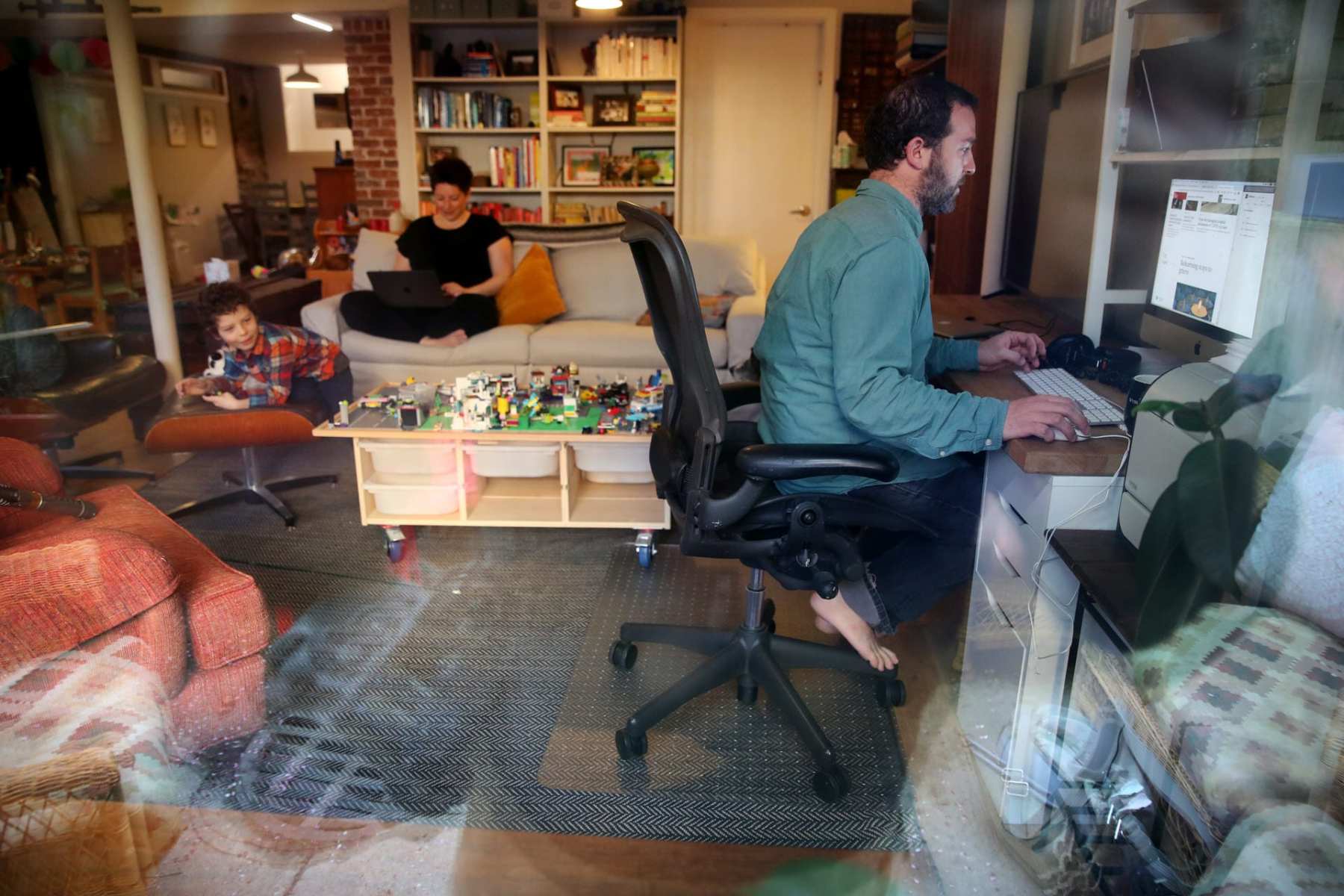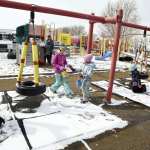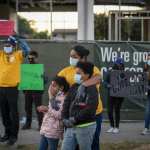Coronavirus closed thousands of daycares last year, forcing parents with young children out of the labor force in droves. The scale of that exodus is now clear: about 700,000 parents are out of the workforce.
New data analysis by the Center for American Progress (CAP), a progressive think tank, found that working parents with children under the age of 5 — especially working mothers — have dropped out of work. Some parents were laid off and gave up trying to find work due to caregiving responsibilities; others left the workforce in order to provide child care.
The research compiled by Rasheed Malik, a senior policy analyst for early childhood policy at CAP, quantifies how much the loss of child care has affected economic stability in families with children, and among working mothers most of all. It was one of the main contributors to the first recession in the nation’s history disproportionately impacting women, making them the most likely to be laid off due to coronavirus closures and the most likely to leave their work in order to take over child care responsibilities.
According to CAP’s analysis, about two-thirds of those parents who left the labor force were mothers.
“More often the mother is saying, ‘I should just leave my job and be here managing my household and we’ll figure things out once the pandemic is over.’ And that is a completely reasonable thing to do. [But] it shouldn’t always be falling on mom,” Malik said. “And then we’re going to have a real problem when we have millions of folks, and women especially, trying to reenter the labor force when we might not have the same kind of child care infrastructure that we used to.”
Since last year, the caregiving crisis has become a key economic issue in a recovery that has slowed month to month. December was the first time since the pandemic began that there were fewer net jobs in the workforce from the month before. As a group, women drove all of those losses.
Women in the 35 to 44 age group, those most likely to have young children, saw their labor force participation rate drop in December, inching closer to where it was at the start of the pandemic. That rate has only dropped three times this year: In May, in September — when many schools reopened virtually — and in December, when coronavirus cases again spiked.
Another study of parents with school-age children (which could overlap somewhat with parents of young children) found that due to concerns over child care, there were about 1.6 million fewer mothers of children ages 5 to 17 in the labor force in September alone.
Even parents who have continued to work have seen significant child care-related disruptions.
Between September and November, CAP found a 144 percent increase in the number of care-related work absences as compared to the same period in 2019.
It’s a problem that has plagued the recovery. The most recent report on economic conditions by the Federal Reserve found child care to be a persistent problem in terms of retaining and hiring workers — particularly women, the report noted — stymying economic growth. A survey by the Federal Reserve Bank of Philadelphia in August found that nearly half of manufacturers in that region said child care challenges made it difficult to bring back furloughed workers or hire new ones. The problem had disrupted assembly lines.
Contributing to the challenges is a child care workforce that is still severely understaffed. The child care sector lost more than 350,000 jobs between March and April, CAP found, and half of those haven’t returned. Since July, the number of child care jobs has largely plateaued due to permanent or temporary closures at centers across the country.
Almost all those losses have been sustained by women: About 95 percent of the child care industry is made up of women, 40 percent of them women of color.
In Wisconsin, Kyra Swenson lost her job as an infant and toddler teacher when her center closed on March 13 — Friday the 13th. It later reopened, but without a mask mandate for staff and without changing group sizes. So Swenson, an asthmatic with two children of her own, didn’t return to work.
“One night my husband finally said, ‘I don’t want to watch you die alone in a hospital,’” Swenson said. Her husband, a data analyst for a health care company, kept his job.
In the months since, Swenson has started an advocacy group in Wisconsin called WECAN — or Wisconsin Early Childhood Action Needed — to raise awareness of the dire state of the industry and how critical child care is for education outcomes, infection mitigation and the economy.
“There is so much tied up in our industry that we need to be seen as important,” Swenson said.
Child care runs at thin margins — parents are charged high rates to keep centers operating, but high overhead costs, insurance and staffing requirements leave many centers paying workers around minimum wage. In 2019, the median hourly wage for child care workers was $11.65, according to the Bureau of Labor Statistics. That’s why an economic shock like the pandemic shuttered centers around the country.
Those that have remained open have also had to contend with new rules implemented later in the year, including small class size ratios and additional coronavirus mitigation guidelines, as well as parents who, either due to economic reasons or health concerns, have in some cases pulled their children out of daycare.
Sara Mauskopf, the CEO of Winnie, a marketplace that helps connect families with child care providers in their area, said there are some signs that the country may be turning a corner. The incoming Biden administration has proposed a 10-year child care overhaul plan, the vaccine rollout is assuaging some fears about putting kids in a group setting, and the start of the new year has helped boost enrollments.
“We were in a crisis with child care in this country and we needed something this big to change the course,” Mauskopf said. “[The pandemic] increased recognition for the value of child care with employers, who realized their employees can't perform without child care; with parents, who realized that child care was also a form of education and development for their children and not just a thing they needed so they could work, but it was also enriching; and with our government. This is the first time that I've seen a real national child care plan being articulated.”
We were in a crisis with child care in this country and we needed something this big to change the course.
Sara Mauskopf, CEO of Winnie, a marketplace that connects family with child care providers
A fresh round of stimulus could help the industry regain some of its footing. Congress has allocated $10 billion in funding for child care, including $250 million for Head Start, the federal program that subsidizes early childhood education. Most of that money will go to grants for child care providers who need help paying employees and rent and making modifications to their centers to follow new coronavirus rules.
Malik, the CAP researcher, called it a “good down-payment,” but child care providers agree that more money is needed to stabilize the industry — and thereby stabilize the economy as a whole.
Lynette Fraga, the CEO of Child Care Aware of America, an industry advocacy group, said $10 billion “is far from what the child care system needs to survive the pandemic.” The group has put the real price tag around $50 billion.
“This will only provide short-term relief,” Fraga said, “on the long road to recovery for child care.”






